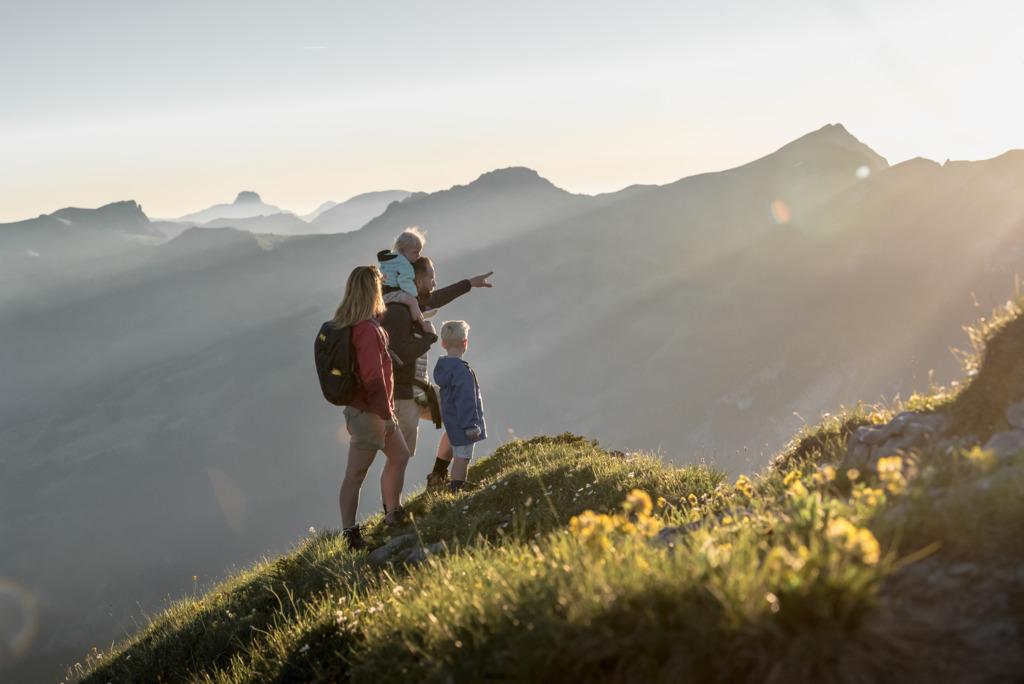Ready for a hike?
14.08.2020 Local NewsTo hike in the mountains, you should be sure-footed, free from giddiness and sufficiently fit. Otherwise it can be dangerous. A comprehensive study by the Swiss Council for Accident Prevention (BFU) shows that many people on Swiss mountain trails do not meet these requirements. Lack of knowledge and overestimation of one’s own abilities are among the main reasons why hikers are unwillingly putting themselves at risk.
Hiking is one of the most popular sports in Switzerland. 57% of the population are on Swiss hiking trails in the course of a year, and the trend is rising. Of course, many international guests also enjoy nature on foot.
Serious accidents occur again and again: 40 people from Switzerland die every year while hiking in the mountains, 4,000 are seriously injured – most of them in a fall. Unfortunately, the Saanenland also had to report a fatal accident in July.
Especially mountain hiking trails have it all: being sure-footed, free from giddiness and fit are basic requirements. Many people are not aware of this, as an ongoing study on the accident risks involved in mountain hiking by the BFU shows.
A quarter not fit enough
Around 4200 people who were on mountain trails were asked about their fitness, among other things. In this context, 26% of those questioned stated that they were only moderately fit or not fit at all. 18% said that they were not particularly sure-footed – yet they were on a white-red-white marked mountain trail, which can contain exposed sections with a risk of falling. Over a third of the respondents were not aware of this.
People who choose a mountain hiking route should always do so with a view to the abilities of the weakest member of the group. Here too, the BFU survey identifies potential for improvement: although 89% of those questioned had previously considered the weather, only 71% had considered the time required for the chosen route, and 61% the difficulty of the route. Only half of those questioned knew of alternative and turning back options in case the route proved too strenuous or the weather changed.
Senior citizens and inexperienced mountain hikers planned their hikes less thoroughly than more experienced and younger respondents.
Not a walk in the park
Based on these and other research results, the BFU is launching a new campaign together with the association Schweizer Wanderwege. The campaign will feature posters, various online activities and preventive measures in the mountains.
The website sicher-bergwandern. ch (available in German, French and Italian) offers a wealth of information and an online self-test for all those who want to find out whether they have the necessary qualifications for mountain hiking trails – or whether they would be better off choosing a yellow marked hiking trail for their own safety.
On schweizmobil.ch, a great deal of information about hiking as well as digital maps and hiking suggestions are also available in English.
BASED ON AVS/BFU
HIKING TRAILS
Yellow signposts, rhombuses and directional arrows
Hiking trails are usually wide but can be narrow and uneven in places. Steep passages have steps and high-risk sections are secured with railings. Apart from the usual attention and caution, hiking trails marked in yellow do not pose any special requirements. It is recommended to wear sturdy shoes with a good grip and equipment appropriate to the weather.
MOUNTAIN HIKING TRAILS
Yellow signposts with white-red-white tip and white-red-white markings
Mountain hiking trails are mostly steep, narrow and partly exposed. Demanding passages are secured with ropes or chains. Hikers should not only be sure-footed, free from giddiness and physically fit, but should also be familiar with the dangers in the mountains. In addition to sturdy shoes with a non-slip sole and equipment adapted to the weather, it is advantageous to carry a hiking map.
ALPINE HIKING TRAILS
Blue signposts with white-blue-white tip and white-blue-white markings
Alpine hiking trails lead partly over snowfields, glaciers or rubble fields and through sections of rock with short climbing passages – in some places without a visible path. Constructional aids cannot be expected. Climbers should not only be sure-footed, free from giddiness and physically fit, but should also be familiar with the dangers in the mountains. In addition to equipment for mountain trails, compass, rope, ice axe and crampons are required, depending on the tour.







